Search Result
Results for "
neuroprotective properties
" in MedChemExpress (MCE) Product Catalog:
4
Isotope-Labeled Compounds
| Cat. No. |
Product Name |
Target |
Research Areas |
Chemical Structure |
-
- HY-B0369A
-
|
|
iGluR
|
Neurological Disease
|
|
Orphenadrine citrate is an orally active and non-competitive NMDA receptor antagonist (crosses the blood-brain barrier) with a Ki of 6.0 μM. Orphenadrine citrate relieves stiffness, pain and discomfort due to muscle strains, sprains or other injuries. Orphenadrine citrate is also used to relieve tremors associated with parkinson's disease. Orphenadrine citrate has good neuroprotective properties, can be used in studies of neurodegenerative diseases .
|
-
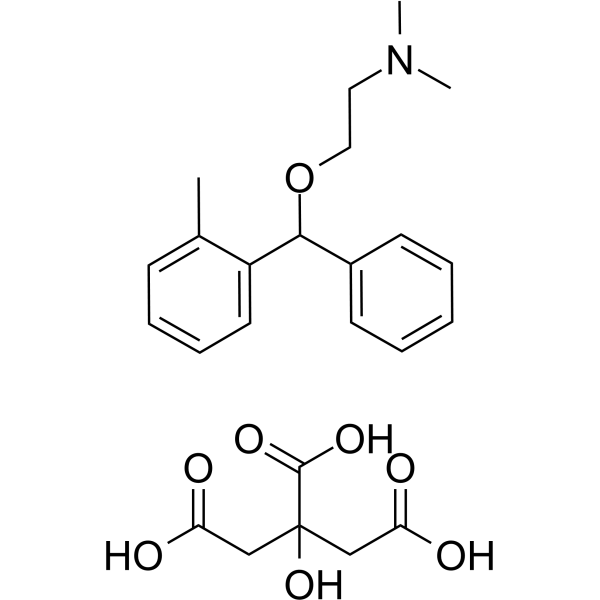
-
- HY-120419
-
|
|
Monoamine Oxidase
|
Neurological Disease
|
|
PF9601N, an monoamine oxidase B (MAO-B) inhibitor, possesses neuroprotective properties in several in vitro and in vivo models of Parkinson's disease (PD). PF9601N can be used for the research of neurodegenerative diseases mediated by excitotoxicity . PF9601N is a click chemistry reagent, it contains an Alkyne group and can undergo copper-catalyzed azide-alkyne cycloaddition (CuAAc) with molecules containing Azide groups.
|
-
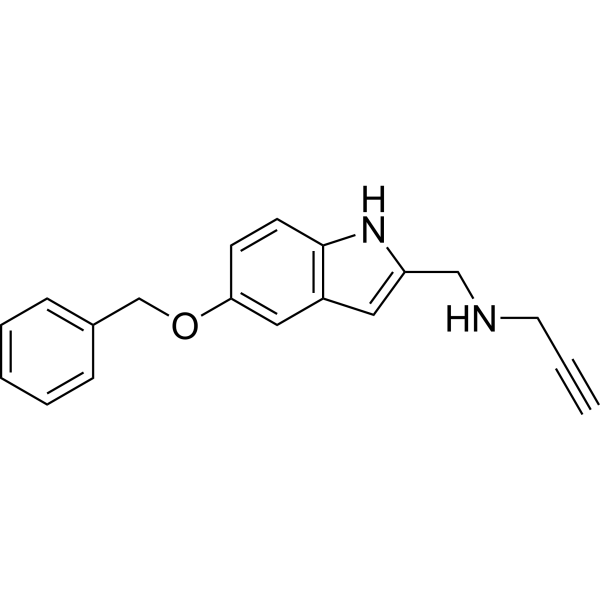
-
- HY-W335927
-
-
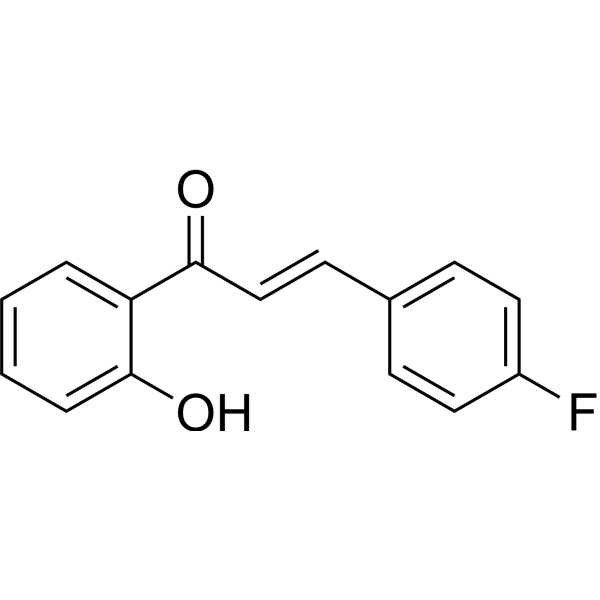
-
- HY-B1126
-
|
|
iGluR
|
Neurological Disease
|
|
Orphenadrine hydrochloride is an orally active and non-competitive NMDA receptor antagonist (crosses the blood-brain barrier) with a Ki of 6.0 μM. Orphenadrine hydrochloride relieves stiffness, pain and discomfort due to muscle strains, sprains or other injuries. Orphenadrine hydrochloride is also used to relieve tremors associated with parkinson's disease. Orphenadrine citrate has good neuroprotective properties, can be used in studies of neurodegenerative diseases .
|
-
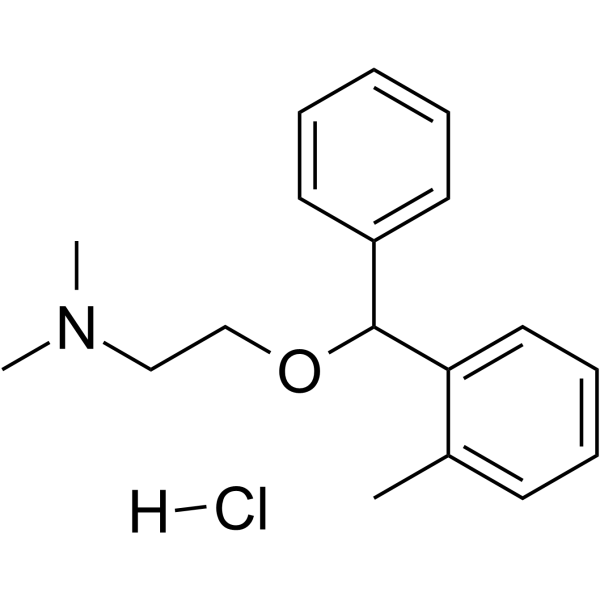
-
- HY-N7284
-
-
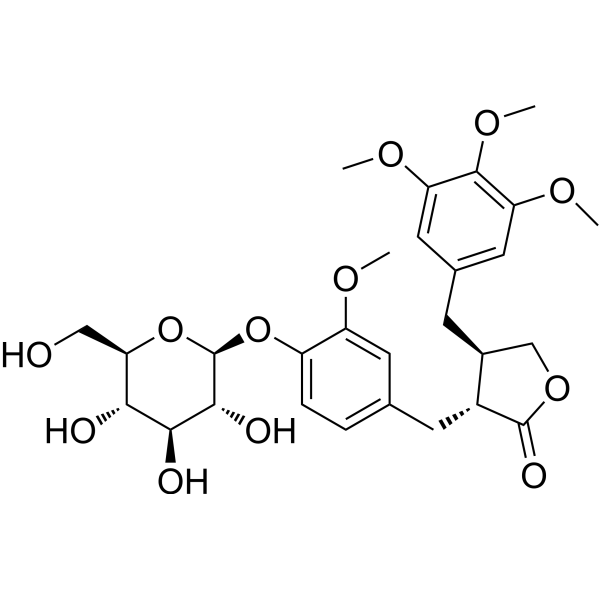
-
- HY-101600
-
-
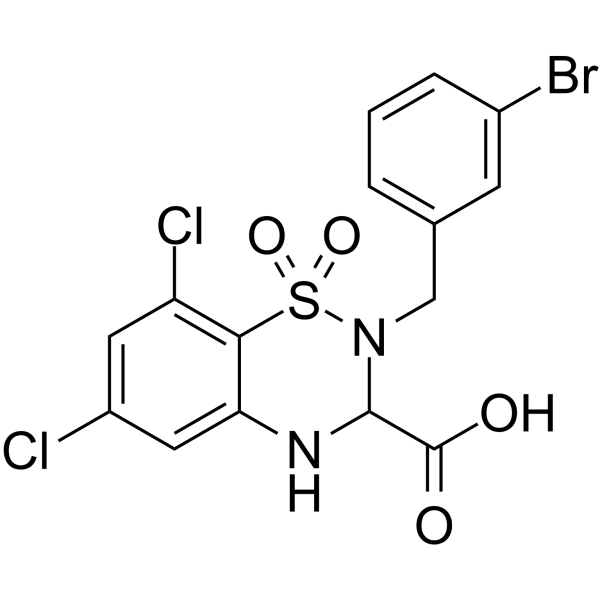
-
- HY-N1318S
-
-
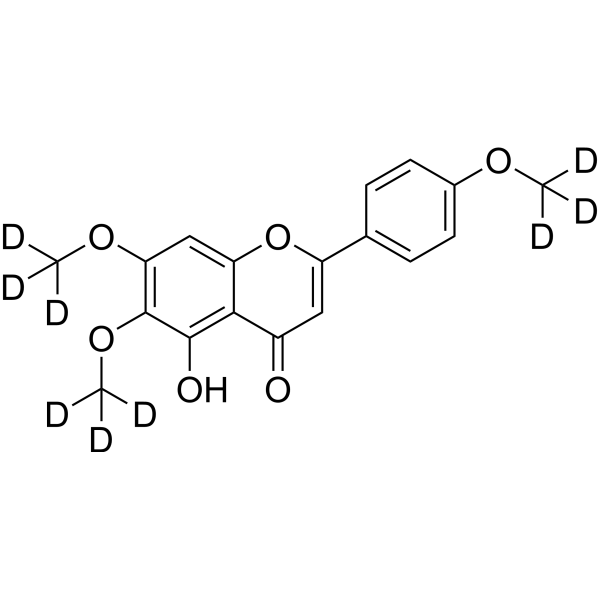
-
- HY-W008613
-
-
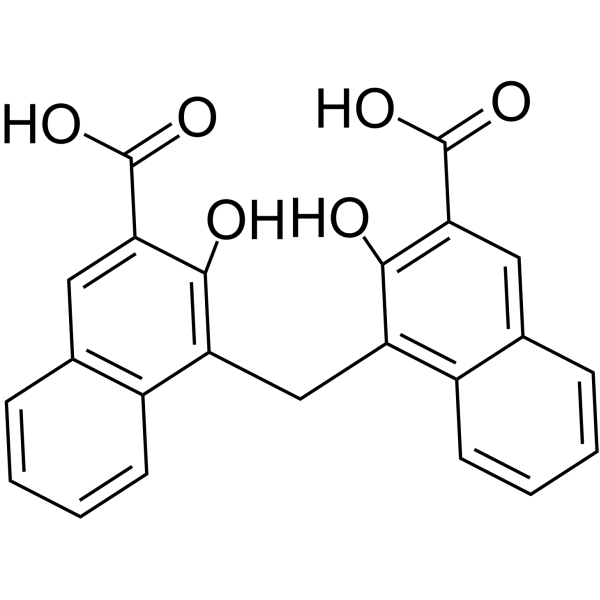
-
- HY-152472
-
|
|
Trk Receptor
|
Neurological Disease
|
|
ENT-C225 is an effective activator of TrkB neurotrophin receptor. ENT-C225 has high effect on activating TrkB receptor (TrkBR), and has good physicochemical properties and neuroprotective properties .
|
-
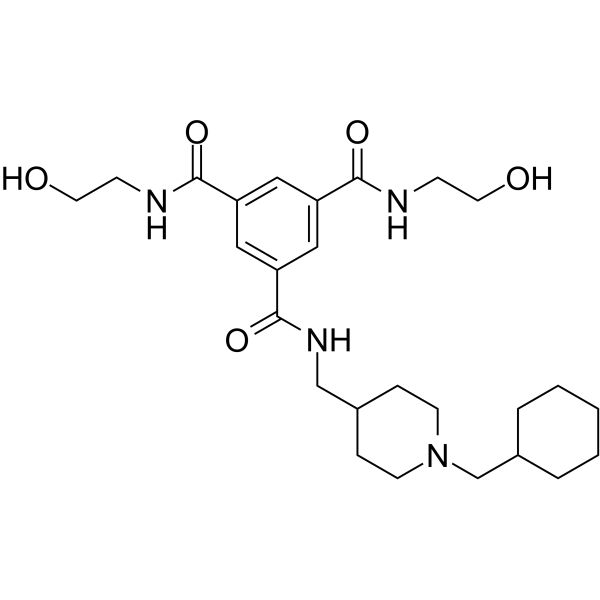
-
- HY-121872
-
|
|
Others
|
Neurological Disease
|
|
DP-b99 is a chelator of zinc and calcium ions that acts selectively within cell membranes and has neuroprotective properties in animal models of stroke.
|
-
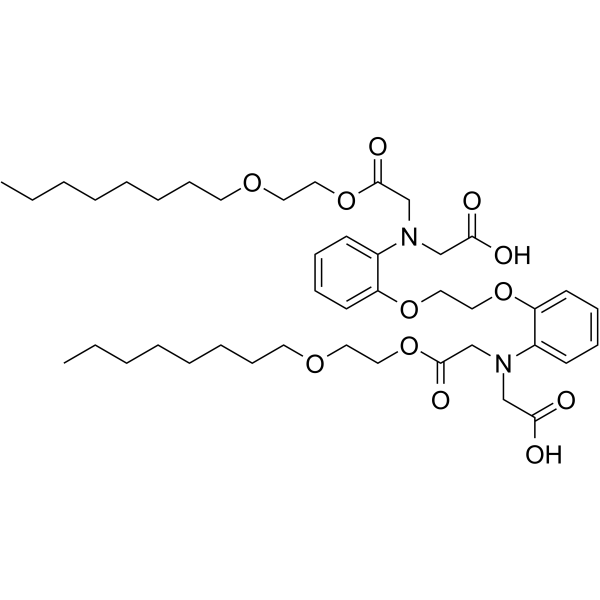
-
- HY-139196
-
-
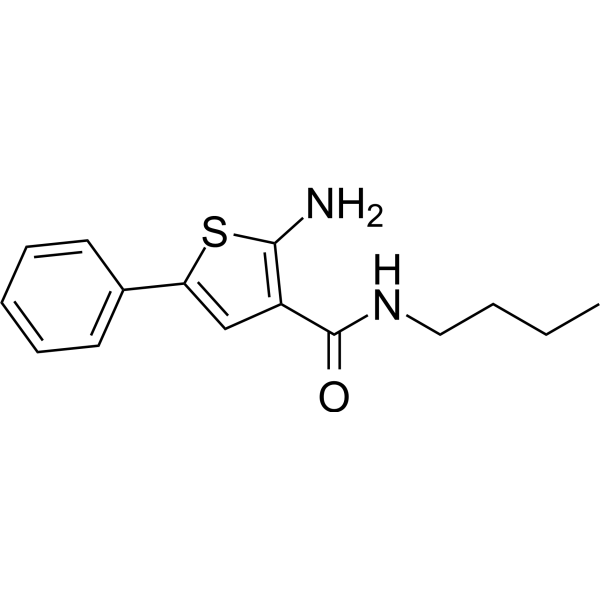
-
- HY-N6038
-
|
|
Fungal
Autophagy
|
Cancer
|
|
Gartanin is a natural xanthone of mangosteen, with antioxidant, anti-inflammatory, antifungal, neuroprotective and antineoplastic properties. Gartanin induces cell cycle arrest and autophagy and suppresses migration in human glioma cells .
|
-
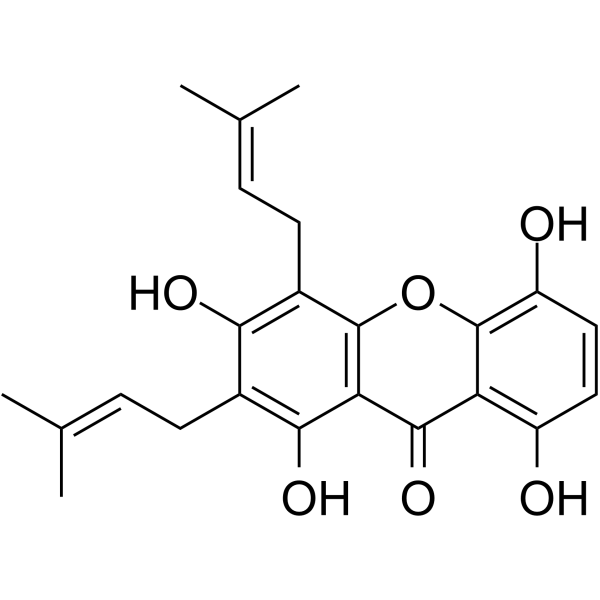
-
- HY-17001
-
|
|
Potassium Channel
iGluR
|
Neurological Disease
|
|
Flupirtine Maleate is a brain penetrant, and orally bioavailable, non-opioid and centrally acting analgesic agent. Flupirtine Maleate is an indirect N-methyl-D-aspartate receptor (NMDAR) antagonist. Neuroprotective properties .
|
-
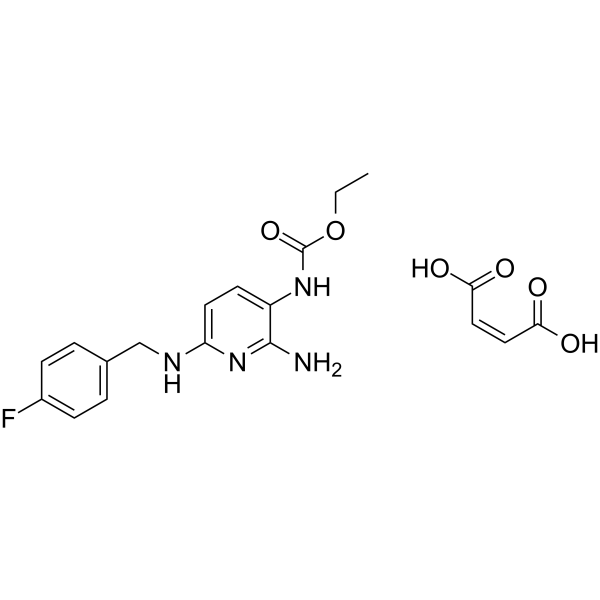
-
- HY-N1318
-
-
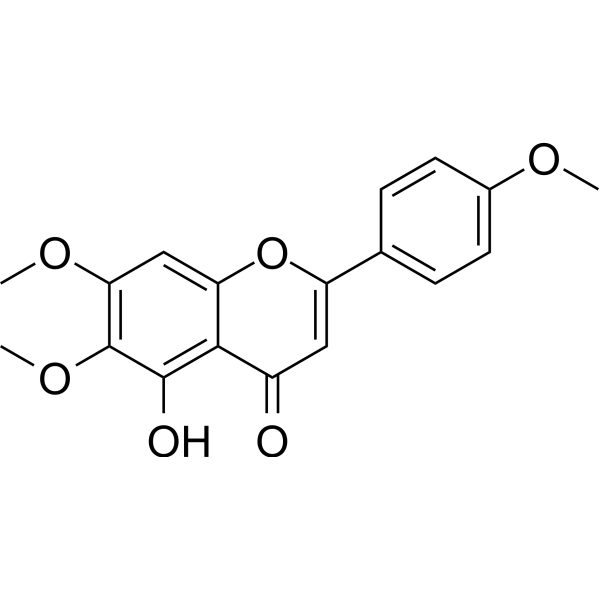
-
- HY-W013075
-
|
Rutoside trihydrate; Quercetin 3-O-rutinoside trihydrate
|
Apoptosis
Endogenous Metabolite
|
Neurological Disease
Cancer
|
|
Rutin (Rutoside) trihydrate is a multifunctional natural flavonoid glycoside. Rutin trihydrate has been demonstrating excellent antioxidant, anti-inflammatory, anti-diabetic, and anti-carcinogenic properties. Cardioprotective and neuroprotective activities .
|
-
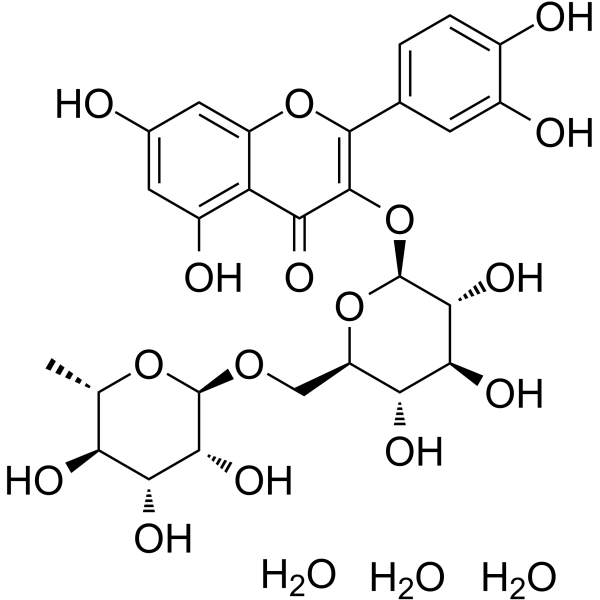
-
- HY-113667
-
|
|
Others
|
Cardiovascular Disease
Neurological Disease
|
|
ASN04885796 (compound IV) is an GPR17 activator with an EC50 of 2.27 nM for GPR17 induced GTPγS binding. ASN04885796 has neuroprotective property and can be used for research of neurological diseases .
|
-

-
- HY-105296
-
|
|
Sigma Receptor
mAChR
|
Cancer
|
|
Blarcamesine is an orally bioavailable Sigma-1 receptor agonist and muscarinic receptor modulator, with anticonvulsant, anti-amnesic, neuroprotective and antidepressant properties. Blarcamesine ameliorates neurologic impairments in a mouse model of Rett syndrome .
|
-
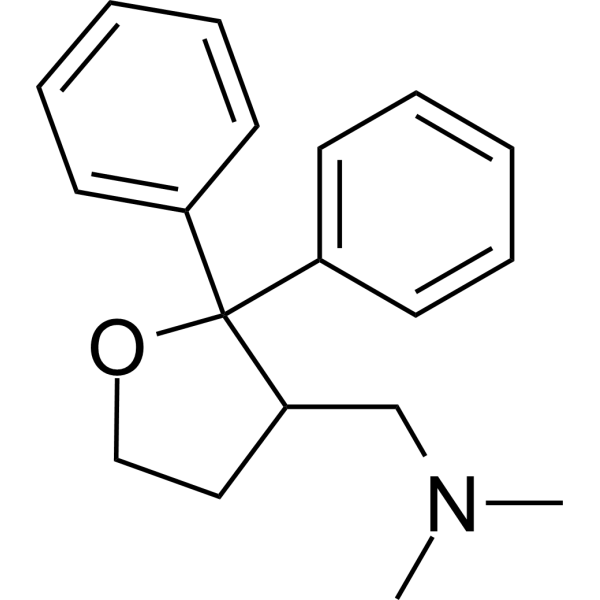
-
- HY-126562
-
-
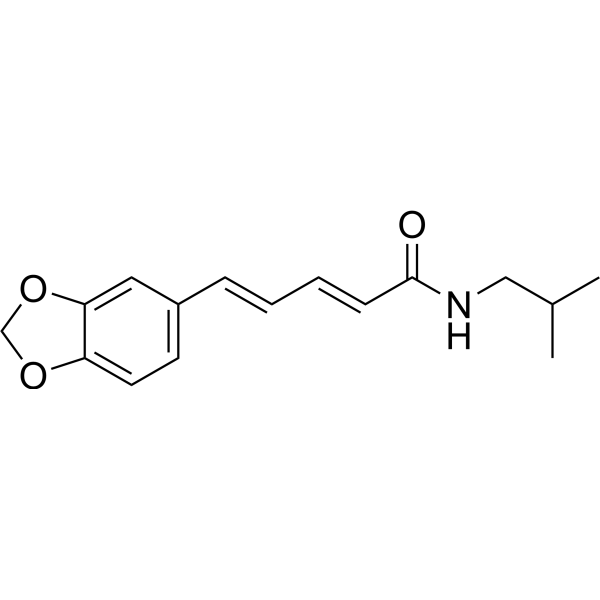
-
- HY-13977A
-
|
|
Apoptosis
|
Neurological Disease
|
|
PKR-IN-C16 (Compound C16) is a specific double-stranded RNA-dependent protein kinase (PKR) inhibitor. PKR-IN-C16 shows promising neuroprotective properties and can rescue acute brain lesions .
|
-
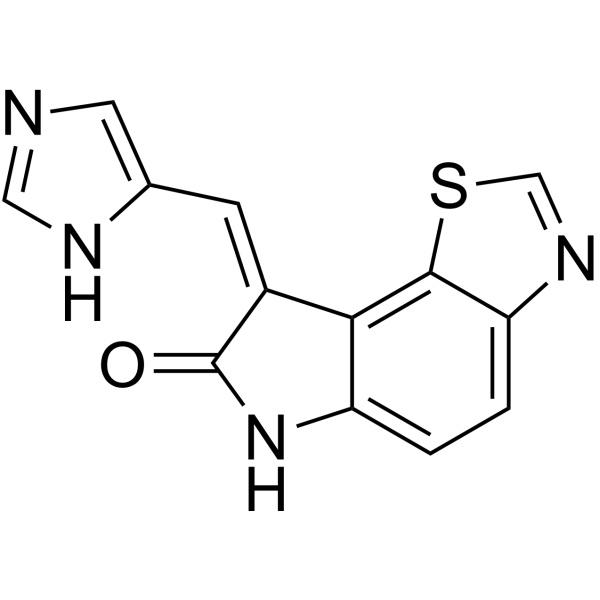
-
- HY-N0405
-
|
|
TNF Receptor
Interleukin Related
|
Neurological Disease
Cancer
|
|
Orientin is a neuroprotective agentinhibits which has anti-inflammation, anti-oxidative, anti-tumor, and cardio protection properties. Orientin inhibits the levels of IL-6, IL-1β and TNF-α. Orientin increases IL-10 level. Orientin exhibits neuroprotective effect by inhibits TLR4 and NF-kappa B signaling pathway. Orientin can used in study neuropathic pain .
|
-
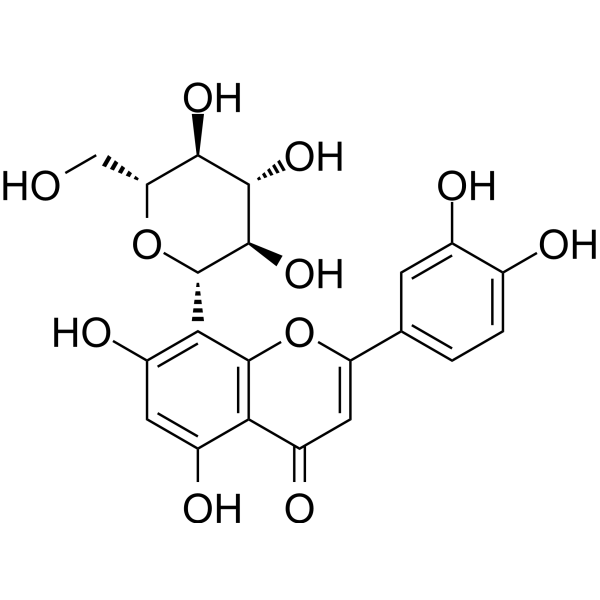
-
- HY-N0036
-
|
(+)-Costunolide; Costus lactone
|
Apoptosis
Endogenous Metabolite
|
Cancer
|
|
Costunolide ((+)-Costunolide) is a naturally occurring sesquiterpene lactone, with antioxidative, anti-inflammatory, antiallergic, bone remodeling, neuroprotective, hair growth promoting, anticancer, and antidiabetic properties. Costunolide can induce cell cycle arrest and apoptosis on breast cancer cells .
|
-
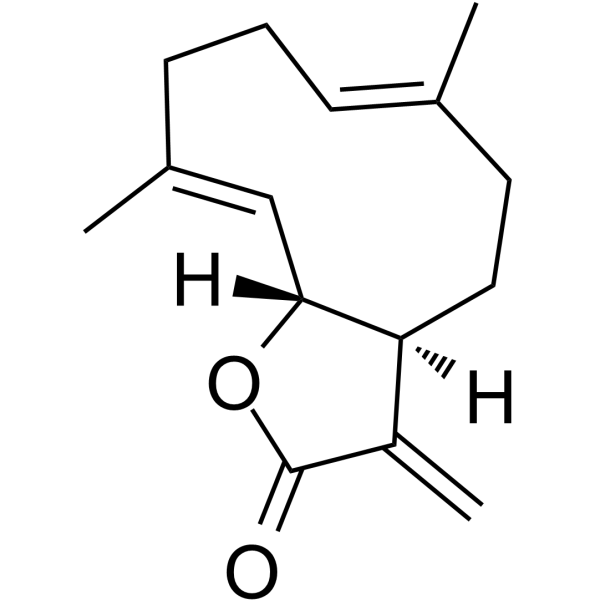
-
- HY-136238
-
-
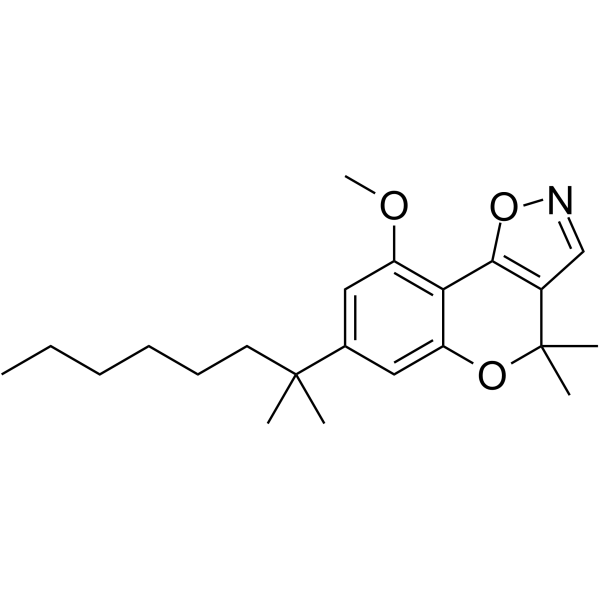
-
- HY-N6960
-
|
Stepholidine; (-)-Stepholidine; L-SPD
|
Dopamine Receptor
|
Neurological Disease
|
|
L-Stepholidine (Stepholidine) exhibits mixed dopamine D1 receptor agonist and D2 antagonist properties. L-Stepholidine has neuroprotective effect and inhibits Heroin-induced reinstatement. L-Stepholidine is a potential medication for the research of opiate addiction .
|
-
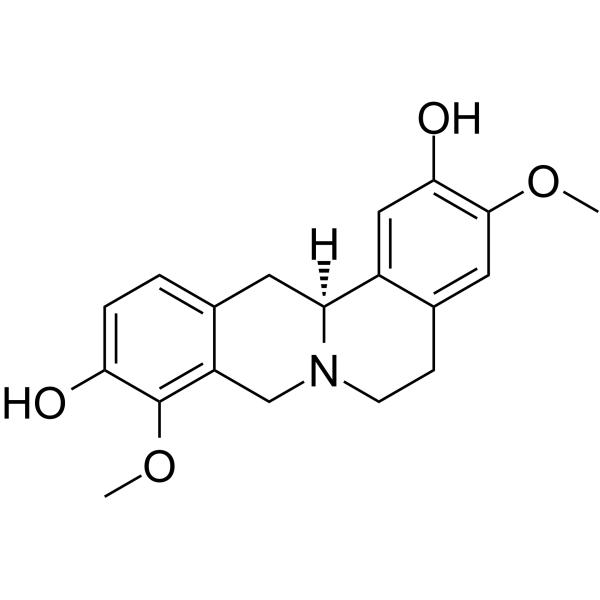
-
- HY-N11061
-
|
|
iGluR
|
Neurological Disease
|
|
Withaphysalin D is a selective antagonist against the N-methyl-D-aspartate receptor (NMDAR) containing GluN2B. Withaphysalin D can be isolated from water lilies and has neuroprotective properties. Withaphysalin D is able to cross the blood-brain barrier .
|
-
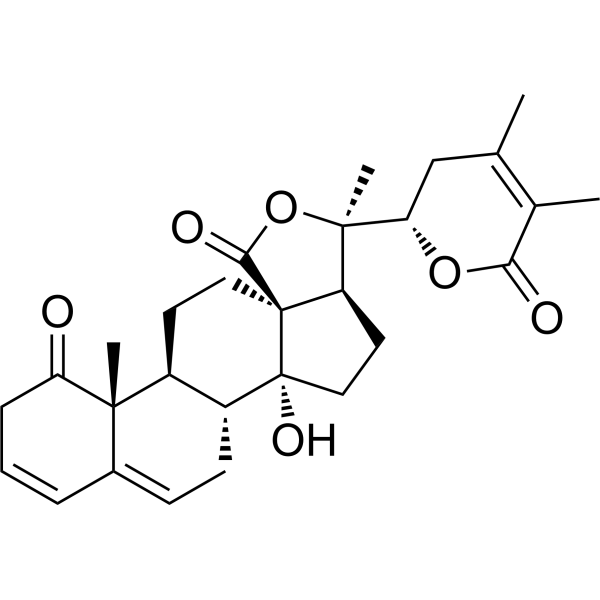
-
- HY-107043
-
-

-
- HY-N0931
-
|
CAY-10683
|
HDAC
Amyloid-β
|
Neurological Disease
Cancer
|
|
Santacruzamate A (CAY-10683, STA) is a potent and selective HDAC2 inhibitor with an IC50 of 119 pM. STA also exerts neuroprotective property against amyloid-β protein fragment 25–35. STA can be used for cancer and neurological disease research .
|
-
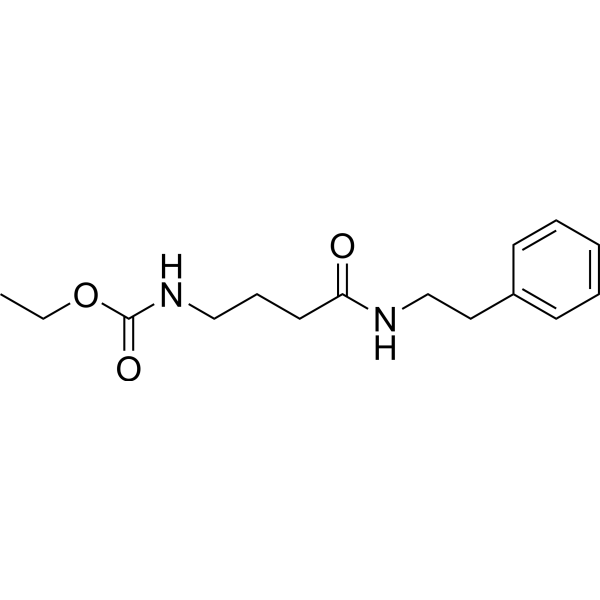
-
- HY-P1293
-
|
|
iGluR
|
Neurological Disease
|
|
Conantokin G, a 17-amino-acid peptide, is a potent, selective and competitive antagonist of N-methyl-D-aspartate (NMDA) receptors. Conantokin G inhibits NMDA-evoked currents in murine cortical neurons with an IC50 of 480 nM. Conantokin G has neuroprotective properties .
|
-
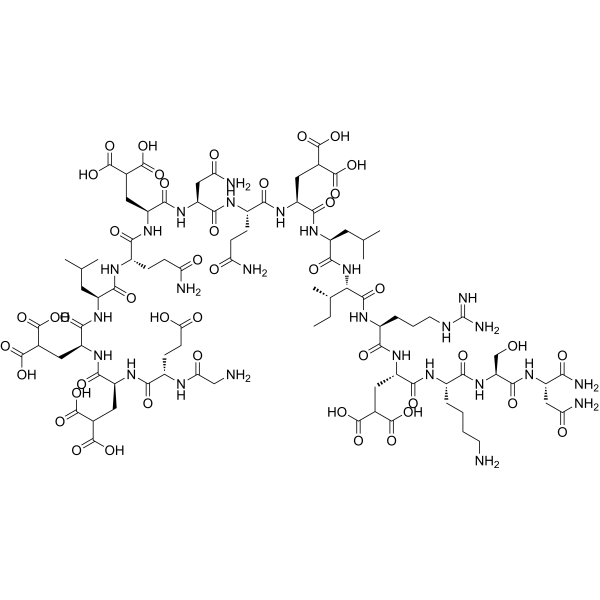
-
- HY-90003S
-
|
|
Isotope-Labeled Compounds
|
Neurological Disease
|
|
Tianeptine-d12 is a deuterated analog of Tianeptine. Tianeptine is an antidepressant with oral activity and neurochemical properties. Tianeptine has neuroprotective effects against hypoxia in tissue culture and against the deleterious effects of cytokines in the cortex and white matter, but not against NMDA receptor-mediated excitotoxicity .
|
-
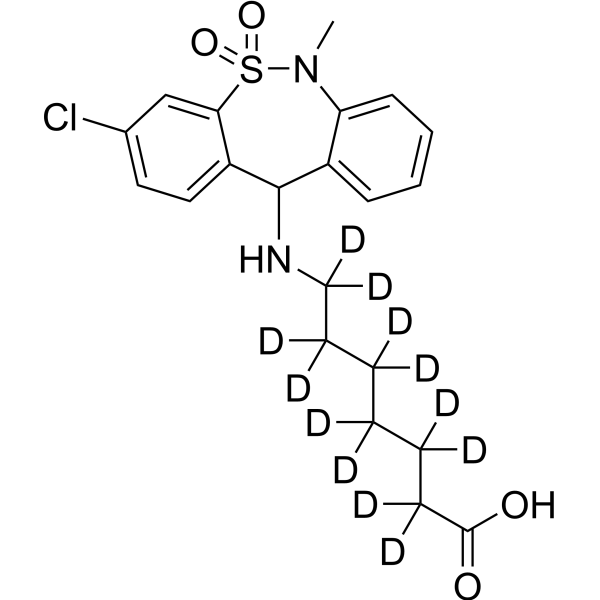
-
- HY-109046
-
|
CX-1632; S-47445
|
iGluR
mTOR
|
Neurological Disease
|
|
Tulrampator (S-47445) is an orally active selective AMPA receptor modulator. Tulrampator possesses procognitive, enhancing synaptic plasticity, anti-depressant-anxiolytic-like, procognitive and potential neuroprotective properties. Tulrampator can be used for research of alzheimer’s disease and in major depressive disorder .
|
-
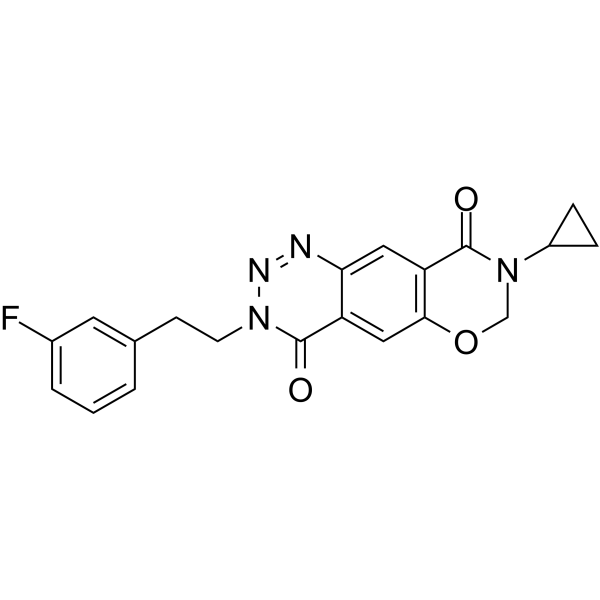
-
- HY-P1293A
-
|
|
iGluR
|
Neurological Disease
|
|
Conantokin G TFA, a 17-amino-acid peptide, is a potent, selective and competitive antagonist of N-methyl-D-aspartate (NMDA) receptors. Conantokin G TFA inhibits NMDA-evoked currents in murine cortical neurons with an IC50 of 480 nM. Conantokin G TFA has neuroprotective properties .
|
-

-
- HY-N0201
-
|
|
Toll-like Receptor (TLR)
JAK
STAT
|
Cancer
|
|
Atractylenolide I is a sesquiterpene derived from the rhizome of Atractylodes macrocephala, possesses diverse bioactivities, such as neuroprotective, anti-allergic, anti-inflammatory and anticancer properties. Atractylenolide I reduces protein levels of phosphorylated JAK2 and STAT3 in A375 cells, and acts as a TLR4-antagonizing agent.
|
-

-
- HY-119744
-
|
|
Cannabinoid Receptor
|
Neurological Disease
|
|
BAY 38-7271 is selective and highly potent and cannabinoid CB1/CB2 receptor agonist, with Kis of 1.85 nM and 5.96 nM for recombinant human CB1 receptor and CB2 receptor, respectively. BAY 38-7271 has strong neuroprotective properties .
|
-
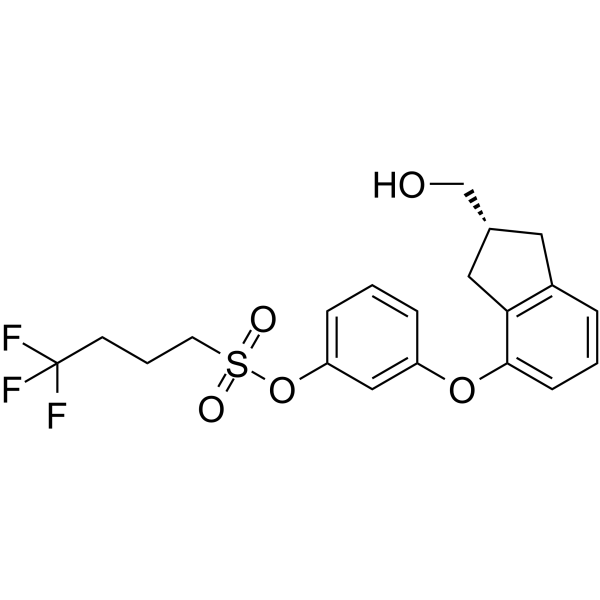
-
- HY-P1932
-
-
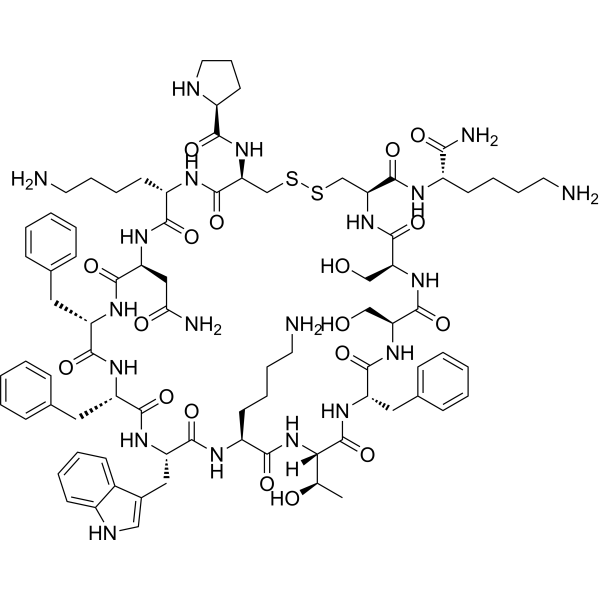
-
- HY-N4005
-
|
|
Bacterial
Tyrosinase
|
Infection
Neurological Disease
|
|
Isoastilbin is a dihydroflavonol glycoside compound in Rhizoma Smilacis glabrae and Astragalus membranaceus. Isoastilbin inhibits glucosyltransferase (GTase) with an IC50 value of 54.3 μg/mL, and also inhibits tyrosinase activity. Isoastilbin shows neuroprotective, antioxidation, antimicrobial and anti-apoptotic properties and has the potential for Alzheimer’s disease research .
|
-
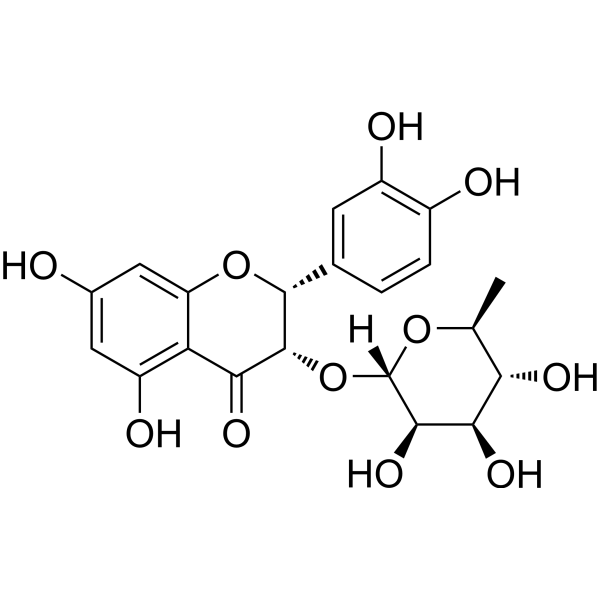
-
- HY-P1932A
-
-

-
- HY-17412S1
-
|
|
Isotope-Labeled Compounds
|
Infection
Neurological Disease
Inflammation/Immunology
Cancer
|
|
Minocycline-d6 sulfate is deuterated labeled Minocycline (HY-17412A). Minocycline is an orally effective semi-synthetic tetracycline antibiotic and HIF-1α inhibitor that can penetrate the blood-brain barrier. Minocycline has bacteriostatic, anti-cancer, anti-inflammatory, neuroprotective properties and antidepressant effects.
|
-
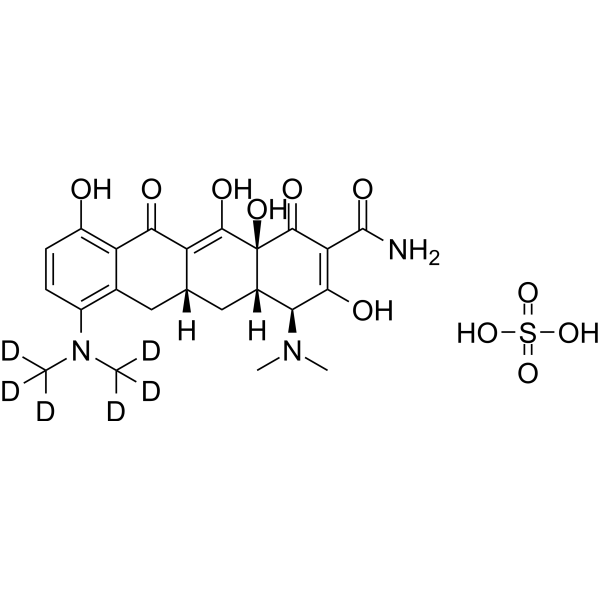
-
- HY-N7363
-
|
(-)-Isolongifolene
|
Apoptosis
|
Neurological Disease
Inflammation/Immunology
Cancer
|
|
Isolongifolene ((-)-Isolongifolene) is a tricyclic sesquiterpene isolated from Murraya koenigii. Isolongifolene attenuates Rotenone-induced oxidative stress, mitochondrial dysfunction and apoptosis through the regulation of PI3K/AKT/GSK-3β signaling pathways. Isolongifolene has antioxidant, anti-inflammatory, anticancer and neuroprotective properties .
|
-

-
- HY-P4052
-
|
|
ROS Kinase
|
Neurological Disease
|
|
Pinealon is a 3-amino acid peptide and shows neuroprotective properties. Pinealon prevents reactive oxygen species (ROS) accumulation and suppresses the activation of ERK 1/2. Pinealon stimulates the functional activity of the main cellular elements of brain tissue, reduces the level of spontaneous cell death. Pinealon protects the rat offspring from prenatal hyperhomocysteinemia .
|
-

-
- HY-153904
-
|
|
Casein Kinase
|
Neurological Disease
|
|
Casein kinase 1δ-IN-5 is a potent and selective protein kinase CK-1δ inhibitor with an IC50 of 47 nM. Casein kinase 1δ-IN-5 shows neuroprotective and anti-inflammatory properties both in vitro. Casein kinase 1δ-IN-5 has the potential for neurodegenerative diseases research.
|
-
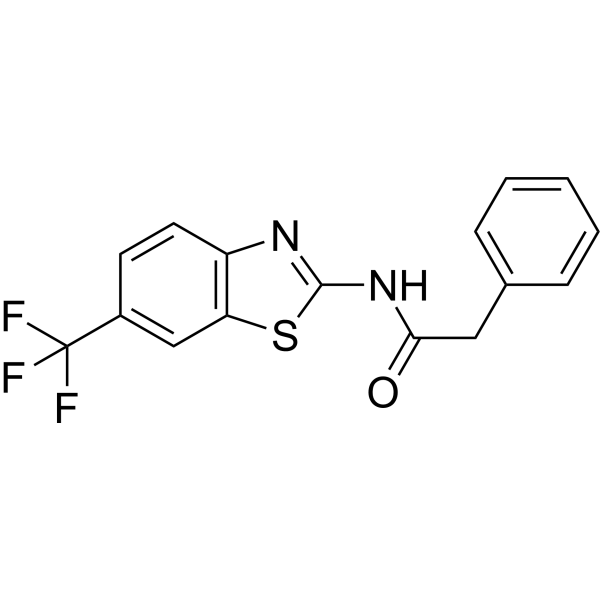
-
- HY-151431
-
|
|
Keap1-Nrf2
Reactive Oxygen Species
ERK
Akt
JNK
|
Neurological Disease
|
|
Nrf2/HO-1 activator 2 (compound 13m), difluoro-substituted derivative, is a potent Nrf2/HO-1 activator. Nrf2/HO-1 activator 2 has neuroprotective and antioxidant effects through the Nrf2/HO-1 pathway mediated by phosphorylation of ERK1/2, JNK, or Akt in PC12 cells. Nrf2/HO-1 activator 2 can be used in the research of Parkinson's disease (PD) .
|
-
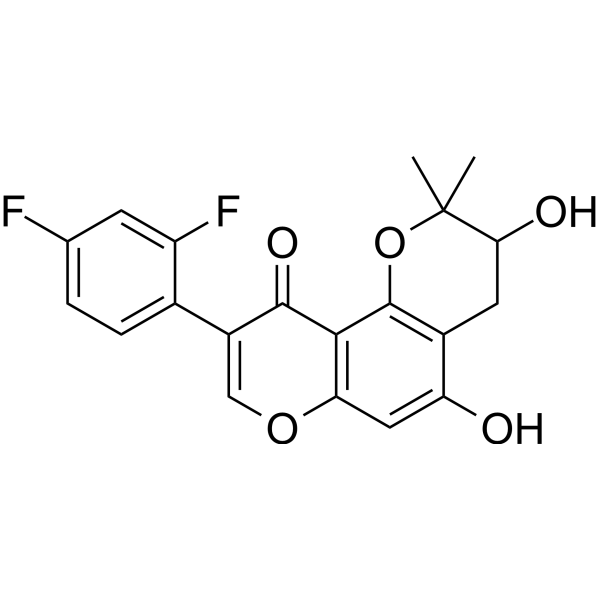
-
- HY-124609
-
|
|
Monoamine Oxidase
Dopamine Transporter
|
Neurological Disease
|
|
CAD031 is a derivative of the Alzheimer's disease (AD) targeting agent J147 (HY-13779) with neuroprotective and memory-enhancing properties. CAD031 enhances memory in mice, improves dendritic structure, and stimulates cell division in the germinal zone of the brain in aged mice. CAD031 is more active than J147 in human neural stem cell assays .
|
-

-
- HY-N0188
-
Esculin
3 Publications Verification
|
p38 MAPK
|
Inflammation/Immunology
Cancer
|
|
Esculin is a fluorescent coumarin glucoside, the active ingredient in ash bark. Esculin has antidiabetic effects, improves cognitive impairment in experimental diabetic nephropathy (DN) via the MAPK signaling pathway, and exerts antioxidant stress and anti-inflammatory effects. Esculin also has anticancer, antibacterial, antiviral, neuroprotective, antithrombotic, and therapeutic properties for eye diseases .
|
-
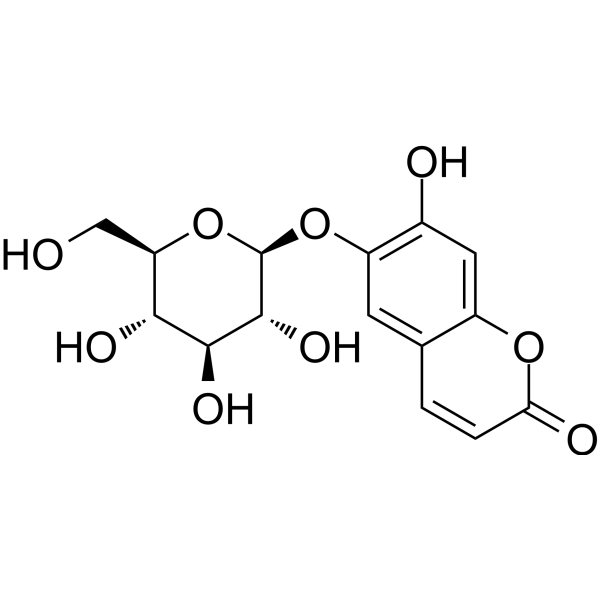
-
- HY-153905
-
|
|
Casein Kinase
|
Neurological Disease
|
|
Casein kinase 1δ-IN-6 is a potent and selective protein kinase CK-1δ inhibitor with an IC50 of 23 nM. Casein kinase 1δ-IN-6 shows neuroprotective and anti-inflammatory properties both in vitro and in vivo. Casein kinase 1δ-IN-6 is a promising drug candidate and can be used for neurodegenerative diseases research.
|
-
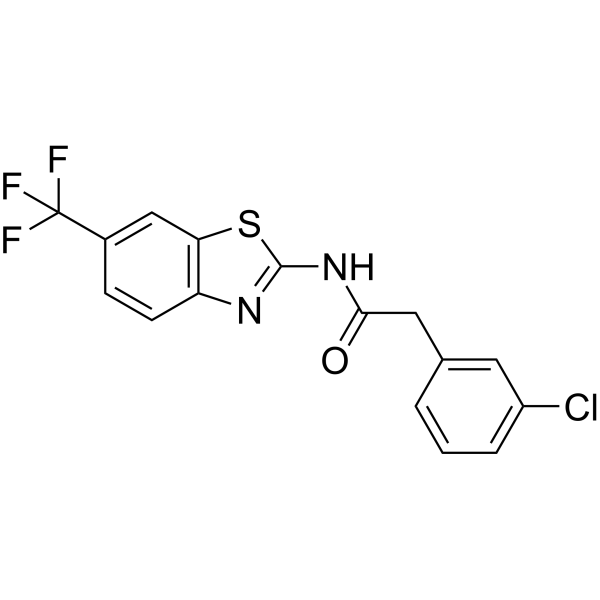
-
- HY-116090
-
|
|
Parasite
|
Infection
Cardiovascular Disease
Neurological Disease
|
|
Conoidin A is a cell permeable inhibitor of T. gondii enzyme peroxiredoxin II (TgPrxII) with nematicidal properties. Conoidin A covalently binds to the peroxidatic Cys47 of TgPrxII, irreversibly inhibiting its hyperperoxidation activity with an IC50 of 23 µM. Conoidin A also inhibits hyperoxidation of mammalian PrxI and PrxII (but not PrxIII) . Conoidin A has antioxidant, neuroprotective effects and can be used for the research of ischaemic heart disease .
|
-

-
- HY-122957
-
|
|
Cholinesterase (ChE)
|
Neurological Disease
|
|
Huperzine C is an alkaloid isolated from Huperzia serrate. Huperzine C is an acetylcholinesterase (AChE) inhibotor, with an IC50 of 0.6 μM. Huperzine C can be used for the research of Alzheimer’s disease .
|
-
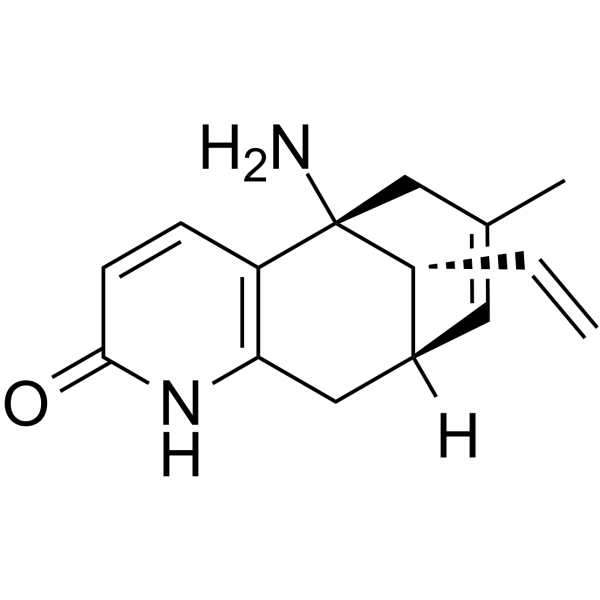
-
- HY-B0612
-
|
|
Calcium Channel
Apoptosis
Reactive Oxygen Species
p38 MAPK
NF-κB
|
Cardiovascular Disease
Neurological Disease
|
|
Lercanidipine is a third-generation, lipophilic, brain-penetrant, vascular-selective and orally active dihydropyridine-calcium channel blocker with a pIC50 of 7.74 (converts from μM). Lercanidipine has long lasting antihypertensive action as well as reno- and neuro-protective effect. Lercanidipine also shows anti-oxidant, anti-inflammatory and anti-apoptotic properties. Lercanidipine can be used in cardiovascular and neurological research .
|
-
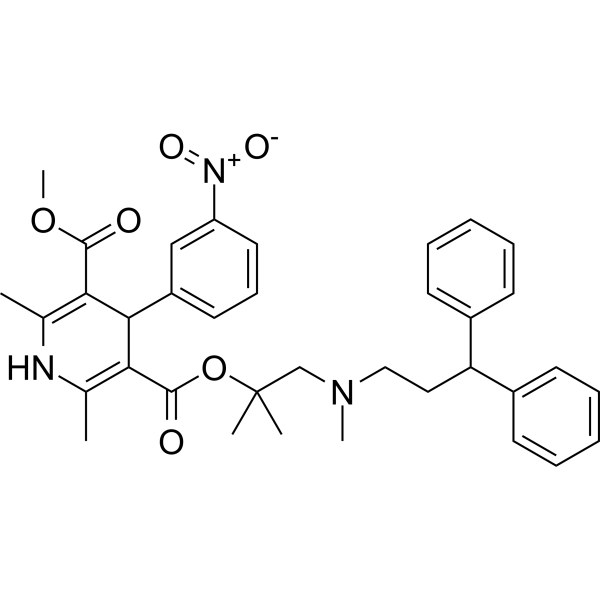
-
- HY-B0612A
-
|
|
Calcium Channel
Apoptosis
Reactive Oxygen Species
p38 MAPK
NF-κB
|
Cardiovascular Disease
Neurological Disease
|
|
Lercanidipine is a third-generation, lipophilic, brain-penetrant, vascular-selective and orally active dihydropyridine-calcium channel blocker with a pIC50 of 7.74 (converts from μM). Lercanidipine has long lasting antihypertensive action as well as reno- and neuro-protective effect. Lercanidipine also shows anti-oxidant, anti-inflammatory and anti-apoptotic properties. Lercanidipine can be used in cardiovascular and neurological research .
|
-
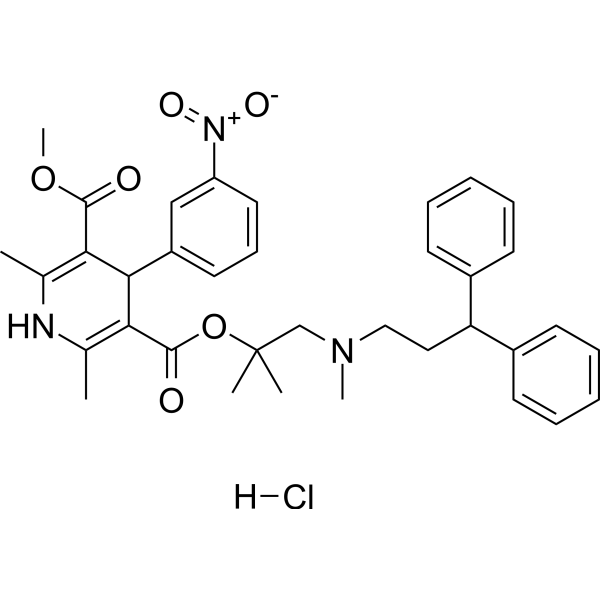
-
- HY-N6947
-
|
Xanthophyll
|
|
|
|
Lutein (Xanthophyll) is a carotenoid with reported anti-inflammatory properties. A large body of evidence shows that lutein has several beneficial effects, especially on eye health . Lutein exerts its biological activities, including anti-inflammation, anti-oxidase and anti-apoptosis, through effects on reactive oxygen species (ROS) . Lutein is able to arrive in the brain and shows antidepressant-like and neuroprotective effects. Lutein is orally active .
|
-
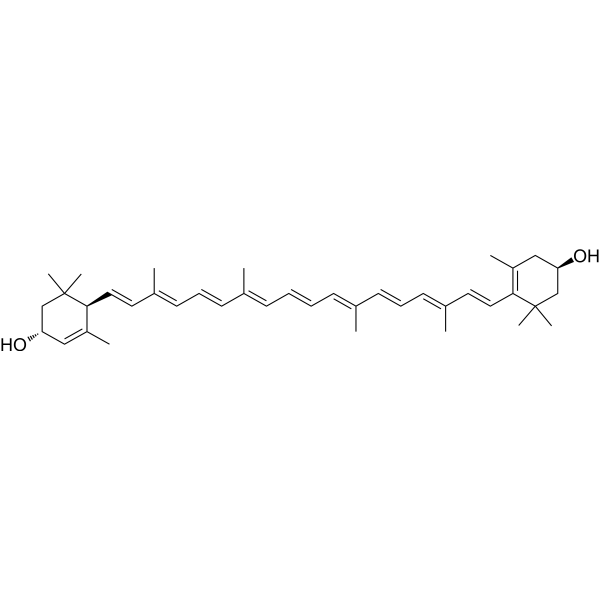
-
- HY-N0057
-
|
3,4-Di-O-caffeoylquinic acid; Isochlorogenic acid B
|
Glucosidase
Influenza Virus
Apoptosis
Endogenous Metabolite
|
Infection
Cancer
|
|
3,4-Dicaffeoylquinic acid (3,4-Di-O-caffeoylquinic acid), naturally isolated from Laggera alata, has antioxidative, DNA protective, neuroprotective and hepatoprotective properties. 3,4-Dicaffeoylquinic acid exerts apoptosis-mediated cytotoxicity and α-glucosidase inhibitory effects. 3,4-Dicaffeoylquinic acid possesses a unique mechanism of anti-influenza viral activity, that is, enhancing viral clearance by increasing TRAIL .
|
-
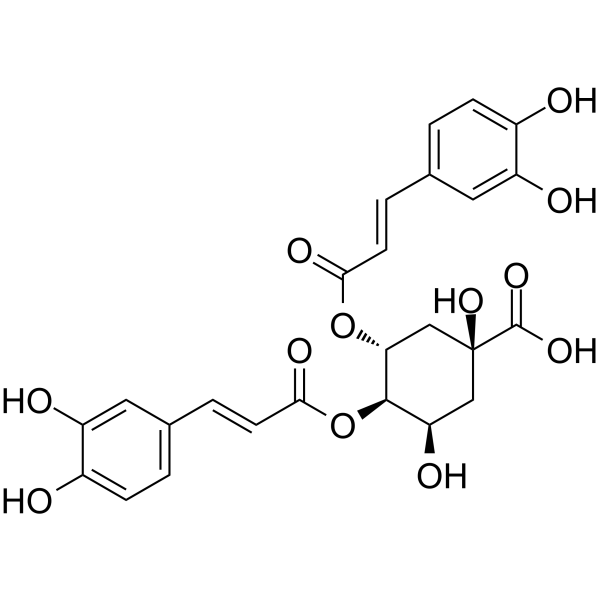
-
- HY-105231
-
|
|
PKC
HIV
Bacterial
|
Infection
Neurological Disease
Inflammation/Immunology
Cancer
|
|
Bryostatin 1 is a natural macrolide isolated from the bryozoan Bugula neritina and is a potent and central nervous system (CNS)-permeable PKC modulator. Bryostatin 1 binds to the isolated C1 domain of Munc13-1 and the full-length Munc13-1 protein with Kis of 8.07 nM and 0.45 nM, respectively. Bryostatin 1 has anti-cancer, anti-inflammatory, neuroprotective, anti-HIV-1 infection properties .
|
-
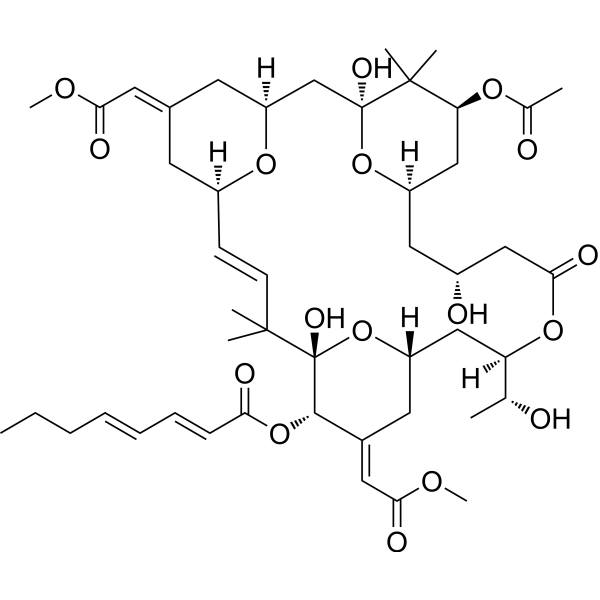
- HY-101170
-
|
|
|
|
|
BU224 hydrochloride is a selective and high affinity imidazoline I2 receptor ligand, with a Ki of 2.1 nM. BU224 hydrochloride is sometimes used as an I2 receptor antagonist. BU224 hydrochloride exerts neuroprotective effects, with anti-inflammatory and anti-apoptotic properties. BU224 hydrochloride improves memory in 5XFAD mice, enlarging dendritic spines and reducing Aβ-induced changes in NMDARs. BU224 hydrochloride can be used for Alzheimer's disease research .
|
-
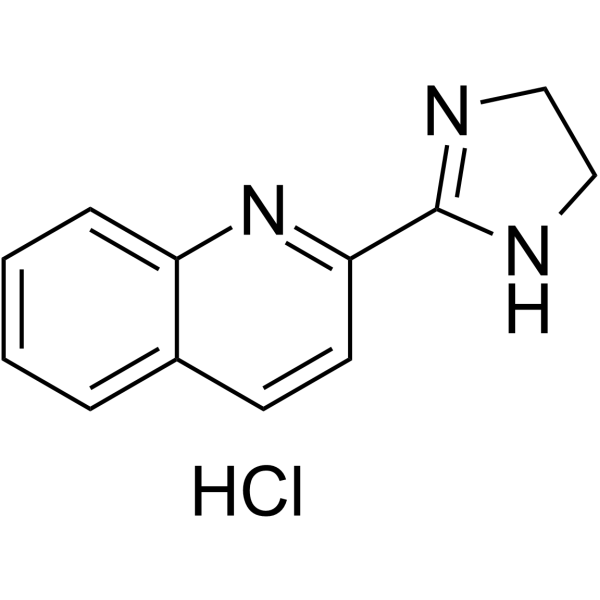
- HY-B1126S
-
|
|
iGluR
|
Neurological Disease
|
|
Orphenadrine-d3 (hydrochloride) is the deuterium labeled Orphenadrine hydrochloride[1]. Orphenadrine hydrochloride is an orally active and non-competitive NMDA receptor antagonist (crosses the blood-brain barrier) with a Ki of 6.0 μM. Orphenadrine hydrochloride relieves stiffness, pain and discomfort due to muscle strains, sprains or other injuries. Orphenadrine hydrochloride is also used to relieve tremors associated with parkinson's disease. Orphenadrine citrate has good neuroprotective properties, can be used in studies of neurodegenerative diseases[2][3].
|
-
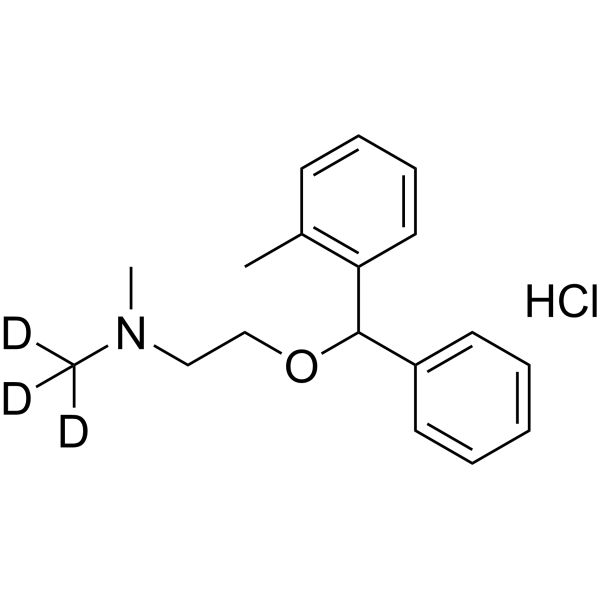
- HY-17412
-
-

- HY-17412A
-
-

- HY-156102
-
|
|
Bcr-Abl
|
Neurological Disease
|
|
c-ABL-IN-5 is a selective c-Abl inhibitor with neuroprotective effects. c-ABL-IN-5 has blood-brain barrier penetrability, metabolic stability and good pharmacokinetic properties. When c-ABL-IN-5 is labeled with [18F] (compound [18F]3), it can be used as a tracer to evaluate disease-modifying efficacy by complementary positron emission tomography (PET). c-ABL-IN-5 can be used in the study of neurodegenerative diseases such as Parkinson's disease (PD) .
|
-
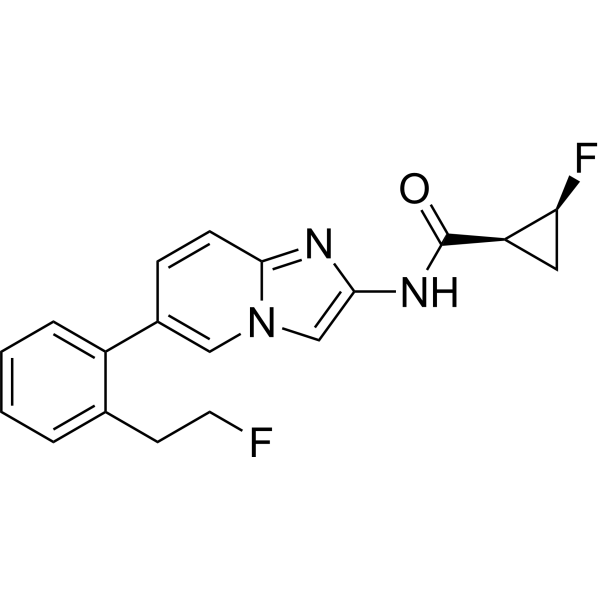
- HY-157992
-
-
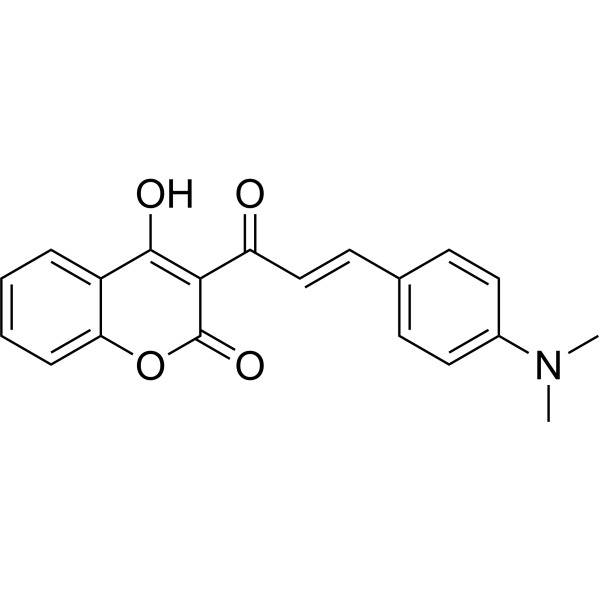
- HY-11010
-
|
|
JNK
|
Neurological Disease
Inflammation/Immunology
Cancer
|
|
AS601245 is an orally active, selective, ATP competitive JNK (c-Jun NH2-terminal protein kinase) inhibitor with IC50s of 150, 220, and 70 nM for three JNK human isoforms (hJNK1, hJNK2, and hJNK3), respectively. AS601245 exhibits 10- to 20-fold selectivity over c-src, CDK2, and c-Raf and more than 50- to 100-fold selectivity over a range of Ser/Thr- and Tyr-protein kinases. Neuroprotective properties .
|
-
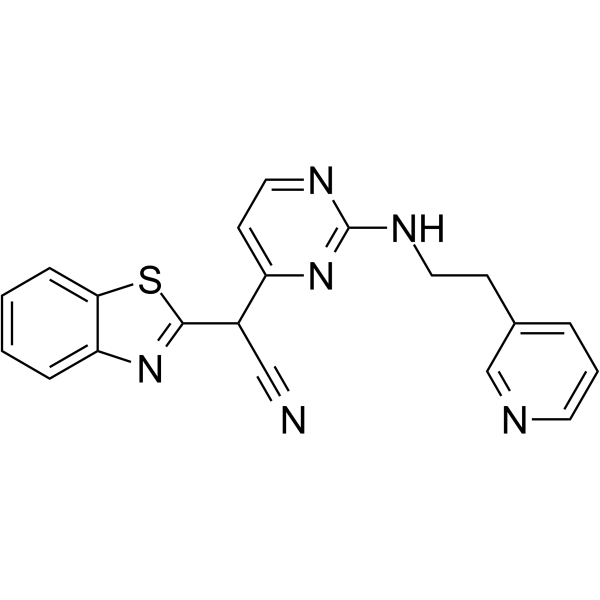
- HY-17412R
-
-
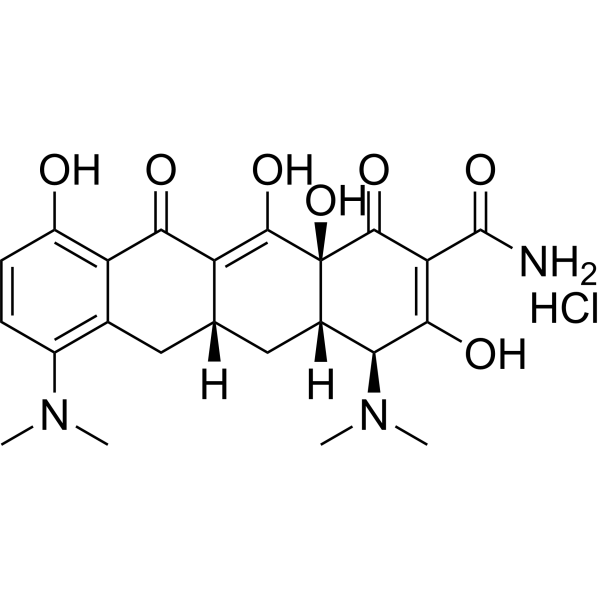
- HY-163150
-
|
|
5-HT Receptor
|
Neurological Disease
|
|
5-HT6R antagonist 3 (compound 15) is a potent, selective and brain-penetrant 5-HT6R antagonist with Ki values of 14 nM, 3533 nM, 35 nM, 1449 nM for 5-HT6, 5-HT1A, 5-HT2A, 5-HT7, respectively. 5-HT6R antagonist 3 shows anxiolytic-like and properties neuroprotective and procognitive-like effects. 5-HT6R antagonist 3 has the potential for the research of Alzheimer’s Disease .
|
-

| Cat. No. |
Product Name |
Target |
Research Area |
-
- HY-P0133B
-
|
Nona-L-arginine acetate; Peptide R9 acetate
|
Peptides
|
Neurological Disease
|
|
(Arg)9 (Nona-L-arginine) acetate is a cell-penetrating peptide (CPP) made up of 9 arginine residues. (Arg)9 acetate has neuroprotective property, exhibits neuroprotective activity with an IC50 of 0.78 μM in the glutamic acid model .
|
-
- HY-P0133
-
|
Nona-L-arginine; Peptide R9
|
Peptides
|
Neurological Disease
|
|
(Arg)9 (Nona-L-arginine) is a cell-penetrating peptide (CPP) made up of 9 arginine residues. (Arg)9 has neuroprotective property, exhibits neuroprotective activity with an IC50 of 0.78 μM in the glutamic acid model .
|
-
- HY-P0133A
-
|
Nona-L-arginine TFA; Peptide R9 TFA
|
Peptides
|
Neurological Disease
|
|
(Arg)9 (Nona-L-arginine) TFA is a cell-penetrating peptide (CPP) made up of 9 arginine residues. (Arg)9 TFA has neuroprotective property, exhibits neuroprotective activity with an IC50 of 0.78 μM in the glutamic acid model .
|
-
- HY-P1293
-
|
|
iGluR
|
Neurological Disease
|
|
Conantokin G, a 17-amino-acid peptide, is a potent, selective and competitive antagonist of N-methyl-D-aspartate (NMDA) receptors. Conantokin G inhibits NMDA-evoked currents in murine cortical neurons with an IC50 of 480 nM. Conantokin G has neuroprotective properties .
|
-
- HY-P1293A
-
|
|
iGluR
|
Neurological Disease
|
|
Conantokin G TFA, a 17-amino-acid peptide, is a potent, selective and competitive antagonist of N-methyl-D-aspartate (NMDA) receptors. Conantokin G TFA inhibits NMDA-evoked currents in murine cortical neurons with an IC50 of 480 nM. Conantokin G TFA has neuroprotective properties .
|
-
- HY-P1932
-
-
- HY-P1932A
-
-
- HY-P4052
-
|
|
ROS Kinase
|
Neurological Disease
|
|
Pinealon is a 3-amino acid peptide and shows neuroprotective properties. Pinealon prevents reactive oxygen species (ROS) accumulation and suppresses the activation of ERK 1/2. Pinealon stimulates the functional activity of the main cellular elements of brain tissue, reduces the level of spontaneous cell death. Pinealon protects the rat offspring from prenatal hyperhomocysteinemia .
|
| Cat. No. |
Product Name |
Category |
Target |
Chemical Structure |
-
- HY-N6038
-
-

-
- HY-N1318
-
-

-
- HY-W013075
-
-

-
- HY-126562
-
-

-
- HY-N7284
-
-

-
- HY-N0405
-
-

-
- HY-N0036
-
-

-
- HY-N6960
-
-

-
- HY-N11061
-
-

-
- HY-N0931
-
-

-
- HY-P1293
-
-

-
- HY-P1293A
-
|
|
Natural Products
Animals
Source classification
|
iGluR
|
|
Conantokin G TFA, a 17-amino-acid peptide, is a potent, selective and competitive antagonist of N-methyl-D-aspartate (NMDA) receptors. Conantokin G TFA inhibits NMDA-evoked currents in murine cortical neurons with an IC50 of 480 nM. Conantokin G TFA has neuroprotective properties .
|
-

-
- HY-N0201
-
-

-
- HY-N4005
-
-

-
- HY-N7363
-
-

-
- HY-N0188
-
-

-
- HY-122957
-
-

-
- HY-N0057
-
|
3,4-Di-O-caffeoylquinic acid; Isochlorogenic acid B
|
Infection
Caprifoliaceae
Classification of Application Fields
Ketones, Aldehydes, Acids
Source classification
Phenols
Polyphenols
Plants
Endogenous metabolite
Disease Research Fields
|
Glucosidase
Influenza Virus
Apoptosis
Endogenous Metabolite
|
|
3,4-Dicaffeoylquinic acid (3,4-Di-O-caffeoylquinic acid), naturally isolated from Laggera alata, has antioxidative, DNA protective, neuroprotective and hepatoprotective properties. 3,4-Dicaffeoylquinic acid exerts apoptosis-mediated cytotoxicity and α-glucosidase inhibitory effects. 3,4-Dicaffeoylquinic acid possesses a unique mechanism of anti-influenza viral activity, that is, enhancing viral clearance by increasing TRAIL .
|
-

-
- HY-105231
-
-

| Cat. No. |
Product Name |
Chemical Structure |
-
- HY-17412S1
-
|
|
|
Minocycline-d6 sulfate is deuterated labeled Minocycline (HY-17412A). Minocycline is an orally effective semi-synthetic tetracycline antibiotic and HIF-1α inhibitor that can penetrate the blood-brain barrier. Minocycline has bacteriostatic, anti-cancer, anti-inflammatory, neuroprotective properties and antidepressant effects.
|
-

-
- HY-N1318S
-
|
|
|
Salvigenin-d9 is the deuterium labeled Salvigenin. Salvigenin is a natural polyphenolic compound, with neuroprotective effect. Salvigenin has antitumor cytotoxic and immunomodulatory properties[1][2].
|
-

-
- HY-90003S
-
|
|
|
Tianeptine-d12 is a deuterated analog of Tianeptine. Tianeptine is an antidepressant with oral activity and neurochemical properties. Tianeptine has neuroprotective effects against hypoxia in tissue culture and against the deleterious effects of cytokines in the cortex and white matter, but not against NMDA receptor-mediated excitotoxicity .
|
-

-
- HY-B1126S
-
|
|
|
Orphenadrine-d3 (hydrochloride) is the deuterium labeled Orphenadrine hydrochloride[1]. Orphenadrine hydrochloride is an orally active and non-competitive NMDA receptor antagonist (crosses the blood-brain barrier) with a Ki of 6.0 μM. Orphenadrine hydrochloride relieves stiffness, pain and discomfort due to muscle strains, sprains or other injuries. Orphenadrine hydrochloride is also used to relieve tremors associated with parkinson's disease. Orphenadrine citrate has good neuroprotective properties, can be used in studies of neurodegenerative diseases[2][3].
|
-

| Cat. No. |
Product Name |
|
Classification |
-
- HY-120419
-
|
|
|
Alkynes
|
|
PF9601N, an monoamine oxidase B (MAO-B) inhibitor, possesses neuroprotective properties in several in vitro and in vivo models of Parkinson's disease (PD). PF9601N can be used for the research of neurodegenerative diseases mediated by excitotoxicity . PF9601N is a click chemistry reagent, it contains an Alkyne group and can undergo copper-catalyzed azide-alkyne cycloaddition (CuAAc) with molecules containing Azide groups.
|
Your information is safe with us. * Required Fields.
Inquiry Information
- Product Name:
- Cat. No.:
- Quantity:
- MCE Japan Authorized Agent:



































































